Filling In or Finding Out Gaps Of Knowledge, by Diego Fdez-Sevilla PhD. Framework and Timeline.
Registered in pdf: “2013-2020 Index and Overall Conclusions Line of Research on Climate and Environmental Synergies “Filling-In-Finding Out Gaps of Knowledge by Diego Fdez-Sevilla phd” March 2021 DOI: 10.13140/RG.2.2.12733.79842 Project: Filling In/Finding Out Gaps Around in Environmental Sciences.
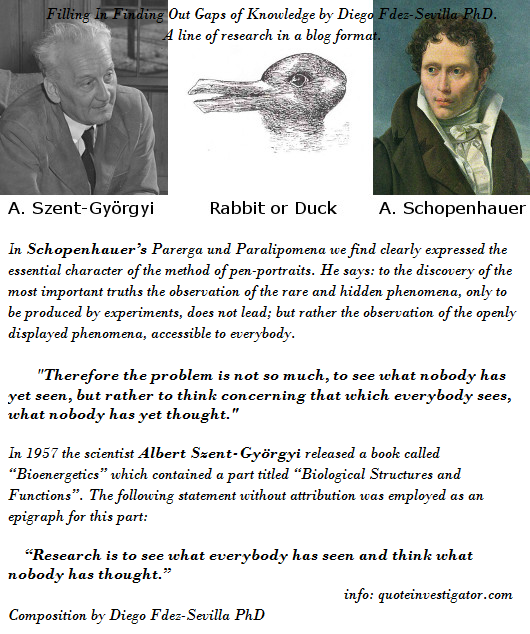 ______________________________________
______________________________________
Since 2013 I have offered analyses that aimed to identify environmental scenarios including shifts in atmospheric circulation, weather patterns and their implication over climatic developments. In this line of research it has been proposed a description over current developments for local and global dynamics. Such description offers an explanation for the development of warm and cold anomalies as Rayleigh-Taylor instabilities induced by an increase in the atmospheric energy load at mid-latitudes, carried by water vapour forcing intrusions over the Poles, promoting an increase in global mixing resulting in a wobbly Polar Jet Stream. This explanation contrasts with the theory of Arctic Amplification which in order to explain warm anomalies over the Arctic proposes heat accumulated in Arctic open waters due to a reduction of ice cover, yet to be explained, suggesting a polar driven anomalous jet stream.
The warm anomaly in Siberia throughout June 2020 is previous to summer, thus previous to Arctic melting enabling SST to accumulate and radiate enough energy to trigger atmospheric warm anomalies. Since the warm Siberia is an atmospheric driven anomaly inducing warm SST, I take it as a form of validation over my approach. Yet, it requires acceptance by other members of the community. Diego Fdez-Sevilla PhD

Some Mentions founds over the Media about the repercussion of the present research on Climate shared since 2013 (Click over the image to enlarge)
_____________________________________________
Since 2013 All This Has Happened …
“email date: Tue, Dec 2, 2014
My name is Diego Fdez-Sevilla. I am a Biologist with a PhD in Aerobiology. After couple of years doing research and working in institutions linked with environmental research and management, I am myself in a period of transition searching for a new job. However, in such competitive scenario, instead of just moving my cv and wait for my next opportunity to arrive, I have decided to invest also my energy and time in finding ways to stay active in research showing what I am capable of. Since without resources it is very difficult to create data with the standards to publish in scientific journals, I have started my own blog in which I publish pieces of research focused on addressing relevant environmental questions.
Throughout several posts in my blog, I have explored the connections between Solar activity, Biological productivity, Polar vortex, Environmental Resilience, Inland Water Bodies and Water Cycle, Energy Balance and the Influence of Continentality on Extreme Climatic Events. Based on my criteria (always open for corrections) I have developed a theory about what I believe it has induced an increase in atmospheric water vapor content and, further I discuss its implications in atmospheric circulation, Jet Stream behaviour and weather system’s patterns.
Based on my previous research published in this blog and, the arguments pointed out in various assessment, I propose for open evaluation by the scientific community the theory of “Facing a reduced differential energy gradient in atmospheric circulation” and the consequent implications over Weather Patterns, Atmospheric Circulation and Atmospheric Oscillations.
In order for me to test the accuracy and validity of my arguments I would like to find feedback from a multidisciplinary audience. And here is where I ask for your help. I am aware of that you might be busy with your daily responsibilities so I understand that it could take you a while to reply. At the same time, I am cautious about how my own perspective about my own work is limited, and I am open to receive feedback giving me a reality check showing how un-relevant it can be the line of research that I address in my approach. Both options would be welcome. Before moving forward in the development of my thoughts I believe that I have to calibrate the accuracy of my conclusions and points of view.
You will find the most relevant posts in the following links:
- 21st October 2014 New theory proposal to assess possible changes in Atmospheric Circulation (by Diego Fdez-Sevilla PhD) October 21, 2014
- 14th November 2014 Why there is no need for the Polar Vortex to break in order to have a wobbling Jet Stream and polar weather? (by Diego Fdez-Sevilla PhD)
Thank you in advance.

_________________________________________
17th of December 2014, email reply from Prof. Jennifer Francis.
“Diego, The topic you’ve written about is extremely complicated and many of your statements have not yet been verified by peer-reviewed research. It is an exciting and active new direction in research, though, so I encourage you to pursue it. To get funding or a job in this field, however, will require a deeper understanding of the state of the research, knowledge of atmospheric dynamics (not just suggestive examples and anecdotal evidence), and statements supported by published (or your own) analysis.” (full email exchange here)
__________________________________________________________________________
March 2021
The conclusion reached in the line of research carried out since 2013 can be summarized as follows:
Based on more than 200 analyses, the data exposed and the discussions carried out, the conclusions reached support the idea of that instead of a process of global warming or cooling there is an invigorated process of global mixing. The energy behind this increase in work is being carried and spread by water vapour throughout the atmosphere thanks to its enhanced thermal capacity promoted by an increasing concentrations of non condensible GHGs like CO2 in conjunction with an increase in albedo due to Land Cover and Use, compaction of soils, compartmentalization of water flows, and most of all, a reduction in the capacity for the biotic system to absorb perturbations. Furthermore, our societies have become so used to handle obsolescence in all products to the extent of living in complete oblivion from a reality where the amount of the resources consumed grow proportionally/exponentially with/as the waste/pollution generated, speeding up the process of transformation in composition, structure and concentration of the components part of the thermodynamic ecosystem built upon the synergistic interactions between soils, gases and water.
Major differences with mainstream research are addressed throughout the study presented defending that the ENSO is not a driver but instead it is driven by, that the Polar vortex configuration is not the cause for but the result of, that SST are a consequence and not the trigger, and ultimately and more importantly, that the biotic component in the planet is the only responsible for taming our climate, avoiding a complete release of energetic discharges accumulated from Sun´s exposition.
May 2021
In 2014 I published the results of my research on atmospheric perturbations pointing out that, opposite from Arctic Amplification, the Arctic temp anomalies and the wobbly state of the polar jet stream are the result of midlatitudinal forcing moving water vapour into Polar latitudes. A process increasing mixing dynamics affecting gradients of energy across the 3D of the atmosphere triggering what are also known as Rayleigh-Taylor instabilities responsible for sudden changes in Temp. At the time, Prof Jennifer Francis expressed her doubts over the validity of my analyses challenging the accuracy of her theory. (2015)https://wp.me/p403AM-to
In 2021 new evidences recognise the limitations of her views whilst my work remains to be valid.
On 12 May 2021 Paul Voosen wrote an article about the uncertainties remaining over the Arctic Amplification theory and the behaviour of the Polar Jet Stream “The true cause of it—and the influence of global warming—remains to be seen.”
https://www.sciencemag.org/news/2021/05/landmark-study-casts-doubt-controversial-theory-linking-melting-arctic-severe-winter
“Satellites and weather balloons have shown that the high troposphere in the tropics is warming fast because of tremendous storms that shoot hot, humid air upward. The Arctic is much less stormy, but many scientists now believe so-called atmospheric rivers regularly deliver this warm tropical air to the Arctic—a mechanism that PAMIP ignored.
Several PAMIP scientists, including Peings, tried to address this shortcoming in a paper last year in Geophysical Research Letters. They compared simulations that accounted just for sea ice loss, which tended to warm only the surface, with models in which tropical air warmed the whole Arctic atmosphere. Those models showed a striking effect of a warmer Arctic: At lower latitudes in Siberia, temperatures dropped 2°C by 2060. “That was a big eye opener for everybody,” Francis says. It made the focus on just sea ice seem like “kind of a waste of time,” she says. Gudrun Magnusdottir, a climate scientist at UC Irvine and co-author of the study, agrees. “It’s dangerous to emphasize just one area and one point,” she says.
The debate is far from over. Indeed, new evidence from weather records, published last month in the Journal of Geophysical Research, suggests the jet stream actually has gotten slightly wavier since the 1950s. The true cause of it—and the influence of global warming—remains to be seen.“
This is part of a story written over a years period, should it be worth to be part of the story being told?
2021 Video presentation of overall conclusions. Voice and graphics by Diego Fdez-Sevilla PhD
________________________________________
Framework and Time-line.
Introduction
About myself
About this Project
“Filling in and Finding out gaps of knowledge”
- Framework: Weather, Climate, Energy, Environment and Man
- Discussion
- The Anthropogenic Link
- Conclusions
- Overall Conclusions
- Imagery and Methodology
- 2019 Research FOLLOW-UP
Metrics
- Stats from WordPress
- Stats from LinkedIn
- Publication example of metrics from LinkedIn vs WordPress
- Stats from Clicky for the year 2016
Media Coverage
- Profile at LinkedIn
- Publications with DOI at ResearchGate
- Publications at YouTube
Publication Index
____________________________________
– Introduction –
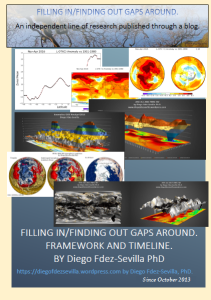 At the bottom of this page there is a Summary and an Index containing the Timeline and Framework behind the research published in the line of research “Filling In Finding Out Gaps of Knowledge” published by Diego Fdez-Sevilla, PhD since October 2013.
At the bottom of this page there is a Summary and an Index containing the Timeline and Framework behind the research published in the line of research “Filling In Finding Out Gaps of Knowledge” published by Diego Fdez-Sevilla, PhD since October 2013.
A report with all major conclusions and all links to previous analyses between “Oct 2013-March 2021” are registered with DOIs in pdf: “Diego Fdez-Sevilla PhD March 2021 Report on Climate and Atmosphere. Filling In or Finding Out Gaps of Knowledge. Framework and Timeline” March 2021 DOI: 10.13140/RG.2.2.12733.79842 Project: Filling In/Finding Out Gaps Around in Environmental Sciences.
For an updated version in pdf, enhanced imagery and data, as well as more in depth assessments, arrangements can be made through email: d.fdezsevilla(at)gmail.com
Please note: If your work gets influenced by points of view, methodology, imagery or any product generated in this website, I ask that you acknowledge it in your use and application. This may be done by including text such as “Diego Fdez-Sevilla PhD orcid.org/0000-0001-8685-0206” data, original idea, methodology, … provided from his Web site “Filling In or Finding Out Gaps Around” at https://diegofdezsevilla.wordpress.com/ in any documents or publications. Also there are articles published in pdf at ResearchGate with a DOI available for its use as reference.
I would also appreciate receiving a copy of the relevant publications. This will help me to justify keeping a fair amount of original research in my publications set available freely online. Copies of all publications shared in this blog are kept stored and catalogued with date of publication in case licensing restrictions are broken.
This Blog is dedicated to Research and Communication in Environmental Sciences under the scope of “Filling in or finding out gaps of Knowledge”.
Based on the knowledge and the skills acquired from my previous training as Master in Environmental Science and PhD in Atmospheric Biology the content aims to offer original material highlighting the implications behind the existence of relevant gaps of knowledge in environmental assessments.
The objectives of this work are: to assess the implications raising from incorporating gaps of knowledge into environmental assessments, to promote multidisciplinary discussion offering a simple layout over complex synergistic interactions, and to make a contribution into the state of knowledge.
By publishing my assessments in an public platform with open access I aim to expose all analyses published for an open review. All comments undergo manual approval process in order to ensure legitimacy and authorship avoiding robots and spammers. Once legitimacy is justified, all comments are published despite of being in agreement or disagreement, following the objective of accomplishing an open debate. If the assessment published has no comments is because there are no record of those despite the number of visits and shares registered.
After a period of time left for commenting and discussion, either here or at LinkedIn, once it has been established the absence of arguments invalidating the assessments published, those assessments more representative are registered with a DOI at my profile in Researchgate. Due to the high number of publications offered (more than 200) DOIs for those publications lacking it can be asked for by email at d.fdezsevilla(at)gmail.com.
More guidance on citing this web as a source can be found at NASA webpage: https://climate.nasa.gov/faq/31/how-do-i-cite-your-website/
Any misuse or mimicking of the research published in this blog being found in papers without attribution will be exposed to the community as a first measure, opening for consideration legal action following Intellectual Property laws.

This work is licensed under a Creative Commons Attribution-NonCommercial 4.0 International License.
About myself:
By Diego Fdez-Sevilla PhD.  CV english and español. Resume. Interdisciplinary Skills applied in the line of research presented.- Index for all analyses published. – Shares and Feedback at LinkedIn
CV english and español. Resume. Interdisciplinary Skills applied in the line of research presented.- Index for all analyses published. – Shares and Feedback at LinkedIn
The fields of knowledge that I am familiar with, thanks to my education (Bachelor in General Biology and Master in Environmental Sciences) and experience as Lead Researcher Ph.D. in Atmospheric Biology and Scientific Coordinator, cover the following areas:
General Biology: Plant Biology, Biostatistics, Physical Chemistry, Geology, Biochemistry, Histology and cytology, Zoology, Cryptogams, Microbiology, Genetics, Plant physiology, Animal physiology and Phanerogams.
Master in Environmental Sciences: Ecology, Edafology, Phytopathology, Evolutionary Genetics, Physical Geography, Geobotany, Plant physiology II, Genetic improvement and Oceanography.
PhD: Aerodynamic properties of pollen grains and sampling method s. 2006 Coventry University, UK in collaboration with Worcester University, UK and German Weather Service DWD.
s. 2006 Coventry University, UK in collaboration with Worcester University, UK and German Weather Service DWD.
Throughout my thesis on the aerodynamic behaviour of pollen grains I run experiments in  a wind tunnel with two different sucking devices, one applying impaction over a sticky substance and other using filters in a downward orientation, and a third method using sedimentation in a chamber with windows on the upper part of a cylinder. Then I contrasted the data for the three methods outdoors.
a wind tunnel with two different sucking devices, one applying impaction over a sticky substance and other using filters in a downward orientation, and a third method using sedimentation in a chamber with windows on the upper part of a cylinder. Then I contrasted the data for the three methods outdoors.
My research applies to risks of contamination from GMOs, allergens exposure, climate  impacts and dynamics as to COVID19. Inertia and diffusion work for the aerodynamic behaviour of particles in the same range as of water drops from saliva. Inertial projected particles can be blocked
impacts and dynamics as to COVID19. Inertia and diffusion work for the aerodynamic behaviour of particles in the same range as of water drops from saliva. Inertial projected particles can be blocked  with barriers, but when the size of the particle becomes smaller and driven by diffusion, those are carried by air currents within the streamlines generated by convection (suspending them in the air getting in touch with eyes) and also from sucking air (breathing). Those sedimented go to our shoes, hands, hair, But everything is related with the virical load in the environment and its characteristics, from being an open environment or enclosed spaces, crowded or not, aimed to random people movement (shops, …), Offices or hospitals, level of ventilation, cleaning, traffic…
with barriers, but when the size of the particle becomes smaller and driven by diffusion, those are carried by air currents within the streamlines generated by convection (suspending them in the air getting in touch with eyes) and also from sucking air (breathing). Those sedimented go to our shoes, hands, hair, But everything is related with the virical load in the environment and its characteristics, from being an open environment or enclosed spaces, crowded or not, aimed to random people movement (shops, …), Offices or hospitals, level of ventilation, cleaning, traffic…
 After accomplishing my Masters in Environmental Science in 2001, I have performed research at PhD level and worked inside and outside academia at institutions linked with environmental research and management.
After accomplishing my Masters in Environmental Science in 2001, I have performed research at PhD level and worked inside and outside academia at institutions linked with environmental research and management.
In 2013 I found myself in a period of transition searching for a new opportunity to be involved in a line of research.
In such competitive scenario, instead of just moving my cv between desks waiting for my next opportunity to arrive, I used it as an advantageous standing point to start and develop independent research in a blog in which I could open my own line of research completely free from external pressures or interferences. The work load carried out in this blog has no economic or institutional support. In order to maintain its continuity I am looking for any form of support; Sponsorship, Mentoring, Patronage, joined Collaborations or a job position.)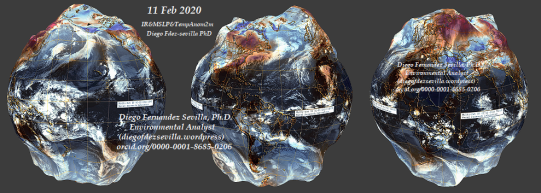
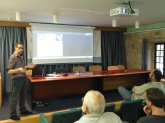 Through the whole project I have increasingly focused on publishing pieces of original research applying my own perspective aiming to address relevant environmental questions.
Through the whole project I have increasingly focused on publishing pieces of original research applying my own perspective aiming to address relevant environmental questions.
The level of uncertainty which I have accomplished in my assessments has reached enough accuracy to replicate real time developments to the point of compete with models sustained by corporate and administrative budgets.
About this Project:
 This project published in a blog format, offers pieces of original research in environmental science, and a space for discussion, based on considering as a major factor limiting our understandings the lack of attention given to the gaps of knowledge existent. The concepts, measurements and parameters applied to address environmental synergistic interactions are too narrow and isolated from each other to understand their full meaning. Such circumstance induce to reach dogmatic patterns of thought to make the quickest conclusions in the absence of a better and clear idea describing what is happening.
This project published in a blog format, offers pieces of original research in environmental science, and a space for discussion, based on considering as a major factor limiting our understandings the lack of attention given to the gaps of knowledge existent. The concepts, measurements and parameters applied to address environmental synergistic interactions are too narrow and isolated from each other to understand their full meaning. Such circumstance induce to reach dogmatic patterns of thought to make the quickest conclusions in the absence of a better and clear idea describing what is happening.
In this Project I aim to address those limitations using observational analyses offering assessments over real time events considering those as proxies of significant value to make interpretations over global synergistic relationships.
Feedback is always welcome here and at my email d.fdezsevilla(at)gmail.com
Since 2002 I have performed research over the Atmospheric Dynamics interacting with the biota in the field of Aerobiology (PhD studying atmospheric conditions affecting the efficiency of pollen sampling and the aerodynamic behaviour of pollen. Conclusions here. Article on anthropogenic forcing over plants performance here).
In Oct 2013 I focused my attention over climatic dynamics and in Oct 2014 I published what I believe to be a valid theory explaining current developments in atmospheric dynamics. I shared my thoughts at my blog and several groups in LinkedIn (like the AGU, NASA and NOAA groups) where the immense response offered has been silence.

 On 17th of December 2014, Jennifer Francis sent her answer to me (full email exchange here):
On 17th of December 2014, Jennifer Francis sent her answer to me (full email exchange here):
“The topic you’ve written about is extremely complicated and many of your statements have not yet been verified by peer-reviewed research. It is an exciting and active new direction in research, though, so I encourage you to pursue it. To get funding or a job in this field, however, will require a deeper understanding of the state of the research, knowledge of atmospheric dynamics (not just suggestive examples and anecdotal evidence), and statements supported by published (or your own) analysis.”
On December 24, 2014, I sent her my reply, which represents the final one since there has not been further communication:
“I just want to thank you for giving me a chance and read my ideas. What I wrote was after reading that Cohen proposed that early snowfall over Asia increases albedo leading to heat retention in the atmosphere provoking Artic ice to melt and create heat absorption leading to jet stream weakening due to Artic Amplification in atm heat absorption. I believe that all of that is a consequence and not the trigger. That is a symptom and not the cause. My theory tries to find common ground to explain the cause leading to Arctic amplification, blocking patterns associated to deep cyclonic events, a pause in atmospheric T raise, increase in kinetic energy dispersed over the whole hemisphere, water flash floods, as well as frequent trans-equatorial circulation between hemispheres at jet stream level. I will try to find data to support my theory and I am open to reconsider all my assumptions. That’s why I really appreciate your input.”
In Feb 2015 I published a revision and since then, a constant follow-up throughout more than 230 assessments. Still today, 2019, the majority of the response is silence despite the amount of visits identified by all the SEO tools and the interactions and shares accounted for individual visits and Institutions (see tab in the right side of the blog and the stats below and open image in new tab for full size options).
So I thank your open feedback and share.
_______________________________
“Filling in and Finding Out Gaps of Knowledge”
____________________________
In AUGUST 2014, Cohen et al, published a review over the state of knowledge on Climatic Assessments: “Review Article: Recent Arctic amplification and extreme mid-latitude weather.” Nature Geoscience volume 7, pages 627–637 (2014) (DOI:10.1038/NGEO2234).
“The theory that Arctic amplification is resulting in a slower zonal jet, increased meridional flow, amplified waves and more persistent extreme weather has received a lot of attention from the media, policymakers and climate scientists. In part due to the high profile, this hypothesis has been scrutinized in the scientific literature more extensively than other hypotheses linking Arctic climate change to mid-latitude weather. However, it is worth noting that other studies on related topics, especially other studies on related topics, especially other observational studies, share some of the same shortcomings: lack of statistical significance, causality unclear, incomplete mechanistic understanding, and so on”.
Between 2014 and 2016 I shared analyses over real time developments in order to validate the hypothesis behind the conclusions offered in 2013. After 2016 I incorporated the process of validating those against time by re-publishing them in contrast with the developments seen in the following years. For the Winter 17-18 I actually have re-published previous assessments with a month or two prior to the period of time addressed in order to evaluate its potential representing a pattern.
In Feb 2017, the line of research presented in this blog reached a final stage in which its framework has demonstrated to hold and support the theoretical approach behind the study bringing original and innovative insights into the state of knowledge addressing environmental synergies by “Filling in and Finding out gaps of knowledge”.
| March 23, 2017 | Final Review in Progress. March 2017. From ENSO to Scientific Thinking by Diego Fdez-Sevilla PhD. ResearchGate DOI: 10.13140/RG.2.2.33915.82726 |
Theories have been formulated to explain, predict, and understand phenomena and, in many cases, to challenge and extend existing knowledge within the limits of critical bounding assumptions.
| October 21, 2015 | Discussing Climatic Teleconnections. Follow Up On My Previous Research (by Diego Fdez-Sevilla) ResearchGate: DOI: 10.13140/RG.2.1.2962.7605 |
| January 20, 2017 | Climate and Indexes. A dashboard of Confusion. (by Diego Fdez-Sevilla PhD) ResearchGate DOI: 10.13140/RG.2.2.25016.96007 |
| April 19, 2018 | Climate, Weather and Energy. Using a Climatic Regime to explain Weather Events by Diego Fdez-Sevilla PhD Research DOI:10.13140/RG.2.2.27923.58406 |
Numerous Follow-ups over previous assessments have been published contrasting their validity against real-time developments (in the timeline section below use ctrl+F: “follow-up”) challenging and legitimizing the conclusions offered:
- Models confuse the science in which those are applied. Factions opposed in views will not come together by using models. And even there is no need for it. Darwin did not need an algorithm and a model to identify genetic evolution. The observational evidence was so strong that unified the scientific community. And evolution is a process comparable with climate, reacts to pressures.
| “The Answer to the Ultimate Question of Life, the Universe, and Everything” is … 42 (by Diego Fdez-Sevilla) Researchgate DOI: 10.13140/RG.2.1.2400.2324 | May 15, 2014 |
| Debating Climate, Environment and Planetary evolution. Define your position. (by Diego Fdez-Sevilla) ResearchGate DOI: 10.13140/RG.2.2.27332.73603 | October 2, 2014 |
| March 10, 2017 | Modelling the “Model” and the Observer (by Diego Fdez-Sevilla PhD) ResearchGate DOI: 10.13140/RG.2.2.17558.04169 |
- Arctic Amplification takes an assumption open for discussion: “sea ice acts as a barrier for the heat transport from the ocean to the atmosphere.” Actually, sea ice acts as a barrier for the heat transport *from the atmosphere to the ocean. The line of research offered taking Arctic SST as responsible for warming processes is not considering the thermodynamics behind changes in phase (liquid/solid/gas) and the difference between condensible and not condensible GHGs. Heat moves between locations AND phases. SST warming the atmosphere would loose heat, thus forming ice.
| November 17, 2016 | Arctic Amplification versus Arctic Absorption (by Diego Fdez-Sevilla, PhD.) Researchgate: DOI: 10.13140/RG.2.2.24688.35848 |
| December 17, 2016 | Orbital Seasonality vs Kinetic Seasonality. A Change Triggered from Changing the Order of The Factors (by Diego Fdez-Sevilla, PhD) Researchgate: DOI: 10.13140/RG.2.2.20129.81760 |
| February 28, 2018 | Arctic Warming as a Result of Convective Forcing by Diego Fdez-Sevilla PhD Pdf at ResearchGate DOI: 10.13140/RG.2.2.34551.73125 |
- Between global warming and global cooling there is global mixing.
| September 8, 2015 | Trans-Arctic circulation between Pacific and Atlantic Basins. A Climate “Between Waters” (by Diego Fdez-Sevilla). Reasearchgate DOI: 10.13140/RG.2.1.1697.5847 |
| May 26, 2016 | Atmospheric Circulation and the Mixing Zone. (by Diego Fdez-Sevilla) ResearchGate DOI: 10.13140/RG.2.2.34019.04645 |
| July 1, 2016 | Atmospheric mixing. Indian Basin June 2016 (by Diego Fdez-Sevilla, PhD.) ResearchGate DOI: 10.13140/RG.2.2.11803.98088 |
| August 26, 2016 | Aug 2016 Follow-up on previous assessments. Atmospheric Dynamics, Temperature Displacements, Atmospheric Mixing (by Diego Fdez-Sevilla, PhD.) |
| September 14, 2016 | Between Global Cooling and Global Warming There Is “Global Mixing” (by Diego Fdez-Sevilla, Ph.D.) Researchgate DOI: 10.13140/RG.2.2.19874.63684 |
| October 13, 2016 | Global Mixing in Atmospheric Dynamics (by Diego Fdez-Sevilla Ph.D.) ResearchGate DOI: 10.13140/RG.2.2.21255.60320 |
| June 9, 2017 | “Mixing Dynamics” in the Atmosphere. A follow-up on previous research by Diego Fdez-Sevilla, PhD. ResearchGate DOI: 10.13140/RG.2.2.23548.03209 |
| March 14, 2018 | Visualising Wind and Convective Forcing Driving Climatic Dynamics. Follow-up 14 March 2018 by Diego Fdez-Sevilla PhD Pdf available at DOI: 10.13140/RG.2.2.34233.06249 |
| April 19, 2018 | Climate, Weather and Energy. Using a Climatic Regime to explain Weather Events by Diego Fdez-Sevilla PhD Research DOI:10.13140/RG.2.2.27923.58406 |
- Anthropogenic transformations over the structure and composition of the three phases of the environment (Gaseous-Atmosphere, Solid- Land Use and Cover, Liquid-Water bodies) have reduced CxHxOx and increased CxOx+HxOx, CxHx, as well as albedo, … altering the energetic balance in the thermodynamic system which conforms our Climatic regimes.
| July 24, 2015 | Solar Activity and Human Activity, Settling Their Environmental Liability. (by Diego Fdez-Sevilla) ResearchGate DOI: 10.13140/RG.2.2.36702.33606 |
| March 3, 2017 | Thermodynamic Ecosystems by Diego Fdez-Sevilla PhD ResearchGate DOI: 10.13140/RG.2.2.32238.10566 |
| March 23, 2017 | Final Review in Progress. March 2017. From ENSO to Scientific Thinking by Diego Fdez-Sevilla PhD. ResearchGate DOI: 10.13140/RG.2.2.33915.82726 |
You can look at the whole project (more than 200 analyses published between 2013 and 2022) published at https://diegofdezsevilla.wordpress.com and also you will find some of those publications with a DOI in my profile at ResearchGate
Framework
Weather, Climate, Energy, Environment and Man
The question driving the whole debate on Climatic Deviations from “a Normal”, or Climatic Drift, focus most of the methodologies on temperature.
However I have followed a different approach in my analyses looking at Gradients of Energy in all its forms. That is why in 2014 I offered my thoughts as a theory of practical applications addressing variations in the gradients of energy found in the atmosphere.
Energy fuels the work done by warm masses of air displacing colder masses of air in their path. That increases mixing patterns generating anomalies in temperature.
The whole approach described in my theory can be observed by the increasing dynamics displayed in the atmosphere as Rayleigh-Taylor Instabilities due to an increase in global mixing between two fluids with different densities, those from the MidLatitudes and the Arctic. (January 13, 2016 Atmospheric Dynamics And Shapes (by Diego Fdez-Sevilla PhD) ResearchGate DOI: 10.13140/RG.2.2.35973.65765
“Behind an increase in the amount of work carried out by masses of air there is an increase in the energy fuelling such dynamics.”
The line of research presented since 2013 points out that the amount of energy in free state contained at Meridional Latitudes (Equator and Mid Lat) is increasing thanks to an enhanced thermal capacity of the atmosphere due to GHGs, together with a reduced capacity of the biotic systems to absorb the energy load contained in the atmosphere from planetary internal and external sources. The augmented load of atmospheric energy at Mid latitudes is forcing its expansion into the Poles, using water vapour transporting and releasing such extra pool of energy.
The transformation of Energy into work moves in Altitude triggering processes of Sudden Stratospheric Warming, and across Latitudes crushing the Polar domes of high dense air, pushing out cold masses of air creating a wobbly Polar Jet Stream.
A wobbly Polar Jet Stream represents a mixing pattern where the Polar Jet Stream is a visual indicator for the position of the collision between two fluids of different densities, cold and warm air. An instability of an interface between two fluids of different densities which occurs when the lighter fluid (warmer) is pushing the heavier fluid (colder).
Whilst warm advection force the intrusion of warm air into Polar Latitudes moving heat waves further from the equator and melting ice at the Poles, the pockets of cold dense air displaced into Mid-Latitudes, generates strong fluctuations in temperature in short periods of time and promotes cyclonic developments.
Such exchange of masses of air with different density, humidity and temperature is triggering a pattern of global mixing dynamics observed as an increase in Rayleigh-Taylor instabilities
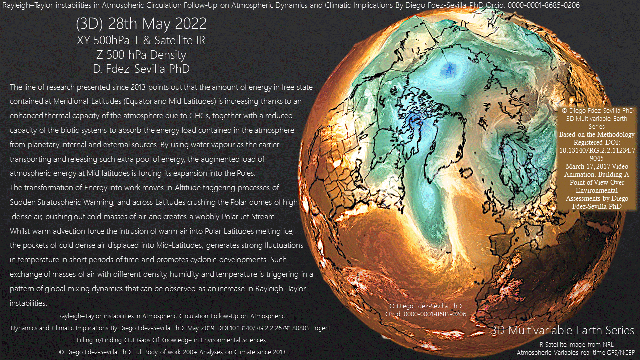 2013-2019 Rayleigh–Taylor instabilities in Atmospheric Circulation and Climatic Implications Diego Fdez-Sevilla PhD) Registered DOI: 10.13140/RG.2.2.26791.80805
2013-2019 Rayleigh–Taylor instabilities in Atmospheric Circulation and Climatic Implications Diego Fdez-Sevilla PhD) Registered DOI: 10.13140/RG.2.2.26791.80805
2013-2022 Climate, Heat waves, Polar Outbursts and the Polar Jet Stream (by Diego Fdez-Sevilla PhD) Registered DOI: 10.13140/RG.2.2.36792.42247
Energy can only be transferred, not created or destroyed. So more work means more energy in circulation. More energy in circulation can only be sustained by a substance carrying it. Either if we consider that the energy driving anomalies comes from the Sun or from the Oceans, the carrier has to be in the atmosphere in order for the energy to produce work. And the body loosing heat cools down.
A corridor of wind over the Arctic is triggered by a conversion of Temperature into work, convection and advection, which are the result of mixing masses of air. As it was published in previous analyses, such Trans-Arctic connection between Atlantic and Pacific Basins is part of a pattern increasing the mixing ratio between masses of air otherwise separate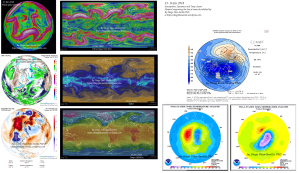 d by thermal compartmentalization, like the Polar Jet Stream. An increase in the dispersion of energetic forms have different outcomes, one of which it would be a temporary reduction in the average temperature resultant for the mixing between Cold (Arctic) and warm (Mid-Latitude) masses of air as well as in altitude (SSW).
d by thermal compartmentalization, like the Polar Jet Stream. An increase in the dispersion of energetic forms have different outcomes, one of which it would be a temporary reduction in the average temperature resultant for the mixing between Cold (Arctic) and warm (Mid-Latitude) masses of air as well as in altitude (SSW).
Subsequently, “temperature” is less reliable than looking at “work” seen even in the “mild” events.
(see ref- Statistical Significance. The Scary Side of Being Mild (by Diego Fdez-Sevilla PhD) ResearchGate DOI: 10.13140/RG.2.2.21934.61767
In the framework presented throughout the line of research published in this blog (and researchgate) it has been considered “Climate” as being defined by the amount of energy free to do work. In other words, energy free to promote weather events. Accordingly, in my research I define Climate by the amount and state of energy in circulation, and Weather by the use of this energy.(ref)
Consequently, with the definition applied for Climate and Weather, my definition of Climate Drift is:
“the deviation from equilibrium of the conditions allowing the perpetuity of an established symbiotic relationship between biotic and none biotic components in a micro and macro ecosystem. This situation can be due to changes in any component of the ecosystem playing a synergistic effect over the rest. And the causes can be either a change in the magnitude of the already implemented forces in place, changes in the directionality or rates in the flows of energy pre-established OR/AND the impact suffered by the incorporation of new components/forces and energy sinks or sources in any part of the system interfering with the previously established order and balance.”
In my assessments I have defended that the increase in the energy pool at mid-latitudes would ultimately create an scenario with an overcharged atmosphere. That would reduce the contrasts with which to create and maintain stability in the structure required to condense energy in singular events, like hurricanes. Giving more relevance to the single contrast between Ocean/continental masses. However, the opening of the Arctic circulation through a weak Jet Stream would reduce the pressure in the containment absorbing the condensation of energy at mid-latitudes, expanding into a new volume.
Accordingly, hadley circulation gets affected (see also) generating new patterns of turbulence at the ITCZ (hurricanes, typhoons, …) as well as it gets influenced Arctic mixing zones with lower latitudes.
In this scenario TCs are generated under an increase in the mixing ratio of an unstable atmospheric circulation dominated by kinetic energy transferred by water vapour thanks to GHGs, and immersed in an overcharged atmosphere with no place where to diffuse its energy, becoming resilient as long as they stay over the ocean. So they endure like a piece of an ice rock in cold water.
About Sea Surface Temperatures, my assessments take SST as subsequent conditions driven by wind shear. So the interaction between masses of air in circulation allows or inhibits SST developments. Once the scenario is built on SST this becomes a “battle field” conditioning the subsequent interaction between the following masses of air and the characteristics of the “grounds” where the game will be played (sort of speak). Like the effect of the ice conditions in an ice hockey match.
El Niño is an event which happens in a very small portion of the Earth, it is related to the temperature of a very thin layer of the Ocean in depth, a small percentage of the area occupied by the whole Oceanic masses, and even smaller when it is integrated in the multidimensional space combining Ocean and Atmosphere.

It is kind of intriguing to think why it has been so easy to conclude that such small portion of the entire system is driving it as a whole. It is like considering that the flowering of plants drives the seasons. Similarly it could be said about using SST at the Arctic to justify altogether; the lack of ice, warmer temperatures at tropospheric level and even at stratospheric level. There is not enough energy in the SST of such small area as it is the Arctic to justify all those convective dynamics.
- March 22, 2016 Pacific atmospheric dynamics with and without a positive ENSO (by Diego Fdez-Sevilla, PhD) Researchgate DOI: 10.13140/RG.2.1.1968.5521).
- February 28, 2018, Arctic Warming as a Result of Convective Forcing by Diego Fdez-Sevilla PhDResearchGate DOI:10.13140/RG.2.2.34551.73125
- May 23, 2018, Convective Forcing Dominates Atmospheric Circulation NH (By Diego Fdez-Sevilla PhD) ResearchGate DOI: 10.13140/RG.2.2.23043.20002
It can not surprise me enough the fact that there is a scientific agreement followed by theories such the Arctic Amplification and Stephan Boltzmann black body radiation, which focus on single locations as sources of energy triggering warming events. Arctic amplification focus the attention in the Arctic, and the absence of ice decreasing albedo, to justify the location for the source of energy warming the atmosphere in the Sea Surface Waters. And it does it even considering the absence of Solar radiation, which in itself discards any process of albedo absorbing and re-emitting energy. Accordingly with their theory, Arctic amplification suggests that Arctic circulation affects circulation at mid-latitudes, however, all the dynamics we see point in the opposite direction. Mid latitudinal forcing pushes against Arctic restrictions through the Jet Stream, displacing cold masses of air in their path, using water vapour as the carrier of the energy feeding convective motions.
Animations from previous publications:
Stephan Boltzmann relation describing radiative gradients of temperature rely entirely on an idealized body homogeneous in composition and even pressure. Such statement neglects the nature of the processes involved in the transference of energy found in the atmosphere where there are simultaneously three states of matter, gaseous, liquid and solid, numerous compounds different in molecular composition and behaviour, as well as an active thermodynamic system made of heterogeneous cells containing independent microsystems of entropy, interacting in a macro system out from equilibrium. (more here).
So opposite from a black body, the distribution of radiation and heat across an  heterogeneous system delivers an uneven distribution marked by the nature of the connections built between micro and macro systems, ecosystems and abiotic systems, gaseous, liquid, solid and multi-estate systems. It becomes evident that there is not a distribution of temperatures following a gradient defined by Stephan-Boltzmann estimations because the transference of energy is heterogeneous due to the heterogeneous composition and disposition of the matter states in the planetary system. By understanding those limitations we can identify the expansion
heterogeneous system delivers an uneven distribution marked by the nature of the connections built between micro and macro systems, ecosystems and abiotic systems, gaseous, liquid, solid and multi-estate systems. It becomes evident that there is not a distribution of temperatures following a gradient defined by Stephan-Boltzmann estimations because the transference of energy is heterogeneous due to the heterogeneous composition and disposition of the matter states in the planetary system. By understanding those limitations we can identify the expansion  of energetic pulses throughout the atmosphere avoiding focusing the attention over the temperatures and instead, focusing the attention into identifying the “work” expressed by the dynamics in motion, either as forms of precipitation, trans-latitudinal transportation of matter (Water Vapour), transference of radiation (SSW), discharges of electricity and displacements of cold and heat waves.
of energetic pulses throughout the atmosphere avoiding focusing the attention over the temperatures and instead, focusing the attention into identifying the “work” expressed by the dynamics in motion, either as forms of precipitation, trans-latitudinal transportation of matter (Water Vapour), transference of radiation (SSW), discharges of electricity and displacements of cold and heat waves.
In my research I have been very persistent trying to highlight how much relevance it is given to a small area in size and depth driving global circulation as it is the SST at the Eq Pacific while an area of the same size and even more depth could be identified in the Amazon or by the change suffered in Land cover by agriculture at global scale.


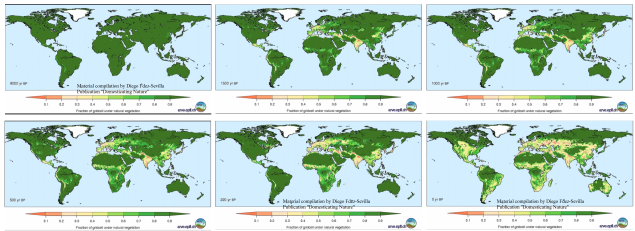
We have to consider that SST are measured in the 5 or less m of the Ocean meanwhile Forests can occupy more than 15 meters in depth. And both are sources of the latent heat  carried out in the atmosphere which fuels convective dynamics dominating intrusions over the Arctic.
carried out in the atmosphere which fuels convective dynamics dominating intrusions over the Arctic.
Among those analyses published in my line of research some time ago studying the impact from changes in Land cover over atmospheric dynamics:
- April 23, 2015 Matching Features Between Land Surface and Atmospheric Circulation (by Diego Fdez-Sevilla) ResearchGate DOI: 10.13140/RG.2.2.20035.30247. https://wp.me/p403AM-xK
- June 10, 2016 The Butterfly Effect on Arctic Circulation. (by Diego Fdez-Sevilla, PhD) https://wp.me/p403AM-12H
__________________
Discussion
_____________________
There have been some assessments showing major discrepancies between the line of research presented here and main stream scientific coverage. The assessments are about the concept of climate drift, the link between the Polar Vortex and tropospheric circulation, the role played by SST and the ENSO, the dynamics explaining abnormal Arctic Warming and sea ice cover, the synergistic implications from the biotic component and the scientific methodology applied.
Polar Vortex
| November 14, 2014 | Why there is no need for the Polar Vortex to break in order to have a wobbling Jet Stream and polar weather? (by Diego Fdez-Sevilla PhD) Researchgate DOI: 10.13140/RG.2.1.2500.0488 |
| October 25, 2016 | Another Heat Wave Another Polar Vortex II … Broken (by Diego Fdez-Sevilla, Ph.D.) ResearchGate DOI: 10.13140/RG.2.2.13418.93124 |
Climate Drift
| October 21, 2014 | (Updated 22/Dec/14) New theory proposal to assess possible changes in Atmospheric Circulation (by Diego Fdez-Sevilla) Researchgate DOI: 10.13140/RG.2.1.4859.3440 |
| Atmospheric Circulation and Climate Drift. Are we there yet? (by Diego Fdez-Sevilla) | July 2, 2015 |
| September 2, 2016 | Climate Drift, The True Meaning of Things and the Drift of Those. (by Diego Fdez-Sevilla, PhD.) |
Arctic Amplification
| November 17, 2016 | Arctic Amplification versus Arctic Absorption (by Diego Fdez-Sevilla, PhD.) |
| December 17, 2016 | Orbital Seasonality vs Kinetic Seasonality. A Change Triggered from Changing the Order of The Factors (by Diego Fdez-Sevilla, PhD) Researchgate: DOI: 10.13140/RG.2.2.20129.81760 |
SST and ENSO
| October 16, 2015 | SST Anomalies and Heat Waves. Are They Not All Just Heat Displacements? (by Diego Fdez-Sevilla) Researchgate: DOI: 10.13140/RG.2.2.23741.05608 |
| December 11, 2015 | Could It Be El Niño The New “Wolf” Coming? (by Diego Fdez-Sevilla) Researchgate DOI: 10.13140/RG.2.1.3238.2801 |
| March 22, 2016 | Pacific atmospheric dynamics with and without a positive ENSO (by Diego Fdez-Sevilla, PhD) Reasearchgate DOI: 10.13140/RG.2.1.1968.5521 |
| June 23, 2017 | “Seasonal Outlook. June 2017 (By Diego Fdez-Sevilla PhD) ResearchGate DOI: 10.13140/RG.2.2.25428.91528 |
The Biotic Synergy
| June 26, 2014 | Biological Productivity and its Influence on Cloud Formation. (by Diego Fdez-Sevilla) |
| December 22, 2014 | Biological Productivity, Amazonia and Atmospheric Circulation. (by Diego Fdez-Sevilla) ResearchGate DOI: 10.13140/RG.2.2.10771.99363 |
| May 7, 2015 | Domesticating Nature. (by Diego Fdez-Sevilla) Rsearchgate DOI: 10.13140/RG.2.2.36812.51848 |
| April 22, 2016 | Plant an Idea and Then a Tree… But Which Ones? (by Diego Fdez-Sevilla) Reasearchgate DOI: 10.13140/RG.2.1.3977.0489 |
| March 3, 2017 | Thermodynamic Ecosystems by Diego Fdez-Sevilla PhD ResearchGate DOI: 10.13140/RG.2.2.32238.10566 |
| May 26, 2017 | Review. CO2 Makes Headlines To Grow Like Trees, Shaping Different Forests Offering Different Views (by Diego Fdez-Sevilla PhD) ResearchGate DOI: 10.13140/RG.2.2.16286.33601 |
The Scientific Method
| Atmospheric Circulation and Climate Drift. Are we there yet? (by Diego Fdez-Sevilla) | July 2, 2015 |
| March 10, 2017 | Modelling the “Model” and the Observer (by Diego Fdez-Sevilla PhD) ResearchGate DOI: 10.13140/RG.2.2.17558.04169 |
Teleconnections
| January 20, 2017 | Climate and Indexes. A dashboard of Confusion. (by Diego Fdez-Sevilla PhD) ResearchGate DOI: 10.13140/RG.2.2.25016.96007 |
| April 19, 2018 | Climate, Weather and Energy. Using a Climatic Regime to explain Weather Events by Diego Fdez-Sevilla PhD Research DOI:10.13140/RG.2.2.27923.58406 |
In the line of research presented in this blog it has been discussed the impact over energy flows derived from solar activity, land use and surface, atmospheric composition of GHGs and aerosols as well as the water cycle.
Based on the previous observations and assessments presented in this line of research, the state of the stratospheric circulation at both poles suggest that there is no need to have sudden warming process at stratospheric level in order to have a broken polar vortex. Such scenario was observed in October 2016 by the configuration of the polar vortex split at the NH without a stratospheric localised strong warming meanwhile the South pole was suffering a Sudden stratospheric warming without splitting the polar vortex.
But also, neither is required a broken polar Vortex in order to have displacements of cold polar masses of air into lower latitudes. Such configuration comes from the convective forcing triggered at lower altitudes by warm masses of air moving towards the poles in latitude and altitude.
This behaviour can be explained by considering the thermal properties of the atmosphere as a system capable of carrying energy across higher latitudes and altitudes without dissipation and in enough concentration to affect the configuration of the polar vortex from the bottom up. Such capacity to keep momentum across latitudes and altitude conserving thermal energy can only be explained by an enhancement in the thermal properties of the atmosphere, which are directly related with its composition.
Throughout my line of research I suggest that there is one approach which is able to unify all events in a single principle. The incorporation of energy into the atmosphere is shaping the atmospheric dynamics we see affecting the behaviour of currents, storms, rain rates, lightning events, wind regimes and temperature variations.
The atmosphere might have trespassed a tipping point absorbing energy making to tremble its previous structural configuration in Latitude and Altitude.
The constant contact of warm masses of air from Low and Mid-Latitudes with those from polar latitudes has worn off the strength of the Polar Jet Stream. Such circumstance has allowed the intrusion of warm masses of air into higher latitudes and altitudes, increasing atmospheric mixing dynamics. These convective intrusions are fuelled by the energy carried within water vapour, inducing the displacements of other colder masses of air in altitude and latitude, increasing the mixing ratio between otherwise compartmentalized parts of the atmosphere.
Such circumstance has allowed the atmosphere to spread the energy carried by water vapour from Mid Latitudes into Polar Latitudes (Arctic latitudes), being able of holding more energy than before since it is not dissipated into their surroundings when moving across latitudes.
 This scenario has induced a trans-Arctic interconnectivity between oceanic basins which has happened with and without the need for a strong sign of the ENSO. Therefore, this would suggest that exchange of masses of air between the Mid low latitudes with the Arctic, through the Polar Jet Stream, is the dominant driver in atmospheric circulation defining the behaviour of equatorial winds. But also, the configuration of the NH Polar Vortex.
This scenario has induced a trans-Arctic interconnectivity between oceanic basins which has happened with and without the need for a strong sign of the ENSO. Therefore, this would suggest that exchange of masses of air between the Mid low latitudes with the Arctic, through the Polar Jet Stream, is the dominant driver in atmospheric circulation defining the behaviour of equatorial winds. But also, the configuration of the NH Polar Vortex.
Altogether the research here presented points to a new scenario in atmospheric dynamics in which the Arctic circulation, previously isolated from Subtropical influence by the Polar Jet Stream, has become open to be involved in the atmospheric dynamics for the Pacific and Atlantic basins. This new interconnection will affect the atmospheric dynamics around the whole North Hemisphere. But also, by being our atmosphere a close system, subsidiary, such alteration would affect dynamics at the Equator and due to symmetric compensation between Hemispheres, moreover into the Southern Hemisphere.
___________________________
The Anthropogenic Link
As a biologist myself I find intriguing to see that our environment is predominately not described in biological terms.
Einstein made it very clear, our environment is a relative proportion of free energy and fixed energy in mass. There is one process in our system fixing E into mass, and one releasing E from mass. The “relative efficiency” of both processes is what is defining the behaviour of our thermodynamic environment.
There is an interference from human activities changing the composition and structure of the three phases of the environment:
- solid; land cover and use affects albedo and changes in evapotranspiration rates due to biotic disruptions on wild population functionality,
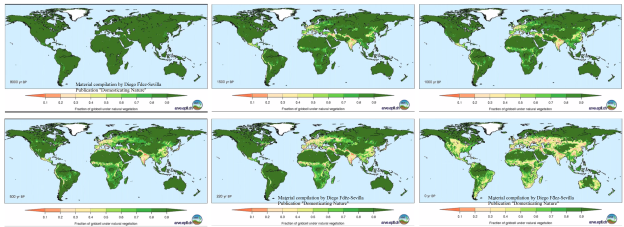
From May 7, 2015 publication Domesticating Nature. (by Diego Fdez-Sevilla PhD) Researchgate DOI: 10.13140/RG.2.2.36812.51848
- the liquid phase through alterations over the water cycles, distribution of water bodies, and humidity of soils as well as affecting circulation patterns due to coastal deterioration and deformation, but also, indirectly due to alterations in the composition of the inert and biotic matter in the Oceans due to pollution and modifications in acidification and salinity related with atmospheric composition and thermal properties.
- and gaseous phase due to alterations in the composition of the atmosphere from GHGs as well as aerosols, altogether affecting its thermodynamic behaviour.
The deviation from equilibrium of those conditions disrupt the perpetuation of an established symbiotic relationship between biotic and none biotic components in the micro and macro ecosystem.
The definitive link between human activities and atmospheric dynamics is under constant discussion since climatic developments are mainly approached from the field of physics.
However, the direct link between Anthropogenic activities and climatic developments are found in biological terms with thermodynamic implications:
Human activity has reduced CxHxOx compounds and increased free CxOx+HxOx.
Furthermore, anthropogenic activities release Energy from breaking structures (C-C) while biochemical processes assimilate energy fixing it into stable structures (CxHxOx).
Anthropogenic activity is simultaneously, releasing energy from a biochemically fixed state into the Planetary System’s Pool, at the same time that, it adds thermoactice compounds as CO2 and H2O. But furthermore, through this activity of constant transformational and processing, human activities are also debilitating the functionality of the biochemical processes capable of absorbing such perturbation, the endogenous ecosystems.
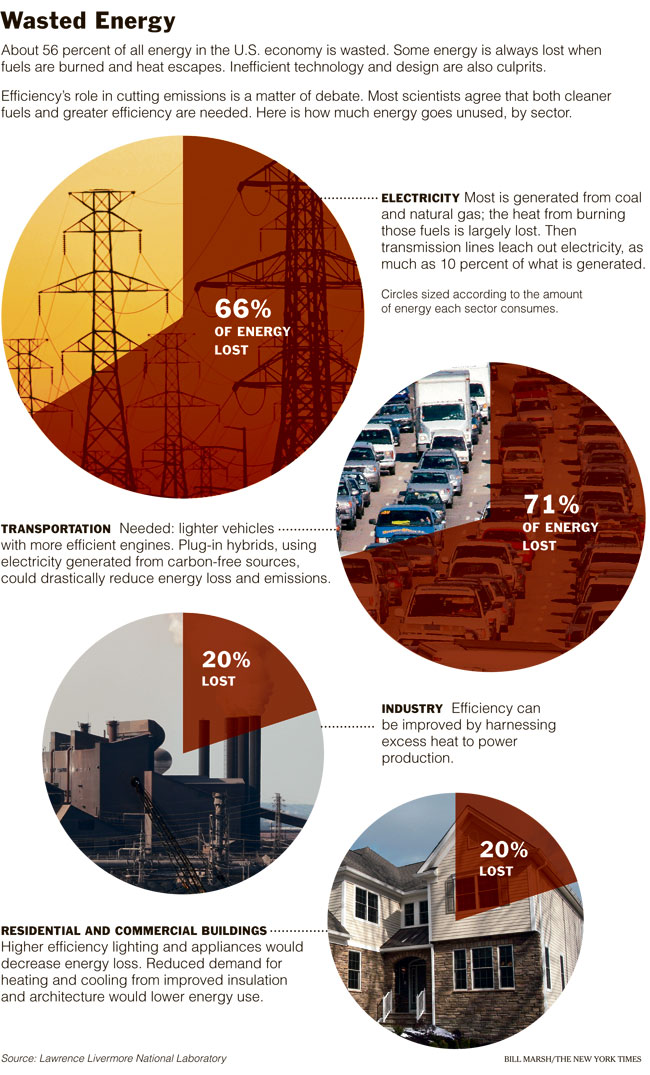
Einstein and his developments were mainly applied in physics due to the use that it was made of his work with the aim to manipulate energy in times of conflict, or to understand space. The equation is simple E=mc2. The language of physics has dominated the discussion over physical developments since then and it has been established as the logical translation of climatic developments. However, in the current times, the role of scientific understanding demands to move beyond the barriers of language, either between semantic cultural languages and between disciplines.
Being myself a Biologist involved in Atmospheric dynamics applying physics to explain such a complex subject as it is climatic evolution might seem like the tale of the child claiming that the Emperor has no clothes.
And yet, it seems to me evident that a thermodynamic system as it is our planet, can not scape from the most basic and powerful understanding of our contemporary scientific evolution. If E=MC2, and the anthropogenic activity is increasing the transformation of M into Energy in the system (from burning Mass from fossils and vegetable components, as well as by liberating other forms of energy such as gravimetric in Dams, Solar, transformation of raw materials, etc,) such transformation rate will move the balance in the thermodynamic behaviour of the whole system, and the rate of such deviation from equilibrium will be related with the speed at which the transformation rate between E/M is performed: M>(c)2
________Conclusions_________
| March 23, 2017 | Final Review in Progress. March 2017. From ENSO to Scientific Thinking by Diego Fdez-Sevilla PhD. ResearchGate DOI: 10.13140/RG.2.2.33915.82726 |
The mere identification of seeing: numbers of trees decreased over 46% from wild ecosystems being affected through time due to agriculture, increased levels of urbanization, deforestation, same for soil degradation, decrease in O2 conc, and an increase in GHG, can not be left out of the equation when considering what it is and what it is not “natural variability”, and the future expected for our thermodynamic planetary system.
Our planet is getting fat on GHG, lacking O2, space to grow natural ecosystems and capacity to fix and store energy. Biology integrates all components in an ecosystem, yet it is missing in climatology assessments.
The main conclusion from the present study researching synergistic interactions between all transformations seen over the Liquid, Gaseous and solid phases of our global Environment indicates that anthropogenic activity is forcing our environment into A System Becoming Dominated By Free Energy. (pdf Registered at ResearchGate DOI: 10.13140/RG.2.2.18509.13289)
Our Planet is made from the combination of all the organisms in a given area and the abiotic elements which affect them. An ecosystem is an open system because it can exchange energy or materials with other ecosystems. Earth is a closed system with respect to nutrients and chemicals, but open with respect to energy. There is an underestimated synergistic relationship between biogeochemical energy flows and those identified in weather patterns and atmospheric dynamics. For too many years it has been considered that the Earth is a garden populated by “elements” offering colourful pleasure and comfort. In fact, the biochemical processes undertaken by our ecosystems function as the most advanced piece of technology known by Humans, responsible for the quality of our air, waters and soils, as much as the sole and unique mechanism capable of interacting with the thermodynamic pressure imposed by the constant exposure of the planet to Sun’s radiation. Until we see the real function of biological processes as climate regulators we will not realise in how much trouble we are.
The biotic component of our environmental system is the only one capable of interacting against thermodynamic entropy, against instability. And for as long as Human activity can not replicate such mechanisms in equilibrium with the resources consumed, it might be time to think about domesticating Human Activities instead of following the obsession for Domesticating Natural Behaviour and Geoengineer our Weather.
_____________________________________________________
________Overall Conclusions________
An increase in the amount of energy being in “free” state means that kinetic processes will increasingly dominate thermodynamic processes, inducing a transition in our Seasonal and Climatic regimes from being driven by Orbital Positioning to be driven by more erratic Kinetic processes. (see related analysis)
Examples of processes releasing ENERGY FROM ANTHROPOGENIC ACTIVITIES

From previous publication “Domesticating Nature” (2015)
Atmospheric Oxygen Levels
Atmospheric Oxygen Levels are Decreasing Oxygen levels are decreasing globally due to fossil-fuel burning. The changes are too small to have an impact on human health, but are of interest to the study of climate change and carbon dioxide. These plots show the atmospheric O2 concentration relative to the level around 1985. The observed downward trend amounts to 19 ‘per meg’ per year. This corresponds to losing 19 O2 molecules out of every 1 million O2 molecules in the atmosphere each year.
Scripps O2 Global Oxygen Measurements The Scripps O2 Program measures changes in atmospheric oxygen levels from air samples collected at stations around the world. This sampling network provides a global and hemispheric perspective on oxygen variability. The Scripps O2 Program is based at the Scripps Institution of Oceanography at La Jolla, California and is under the direction of Professor Ralph Keeling.
_____________Imagery and Methodology_________
Nowadays, there are many divisions between disciplines due to the isolated nature of their specific language and methodologies. I might not use the right vocabulary for all the fields which I discuss, or the right data or the right reasoning. But when nobody is able to offer a consensus over what is going on, I wonder, what is right this days?.
The line of research presented in this blog describes a scenario where things happen for a reason, and where there are reasons for things to happen. No model offers that much. Meanwhile “reasons” explain probabilities, models use “probabilities” to let you figure out the reasons.
After leaving months, even years of time to expose my conclusions for public discussion and review, once those have no faced any criticism or arguments refuting their value, I create a pdf file and a DOI publishing them at my profile in Researchgate. In order to maintain their genuineness and legitimate innovative nature, I keep its original state so those can be compared with any copy made by any third party at any time. For your own references and review over its originality over time with respect to other publications via scientific papers and/or news reports, you can compare the publications at the blog and researchgate with the records archived:
- at the web.archive.org site http://web.archive.org/web/*/diegofdezsevilla.wordpress.com
- ResearchGate profile https://www.researchgate.net/profile/Diego_Fdez-Sevilla
- LinkedIn Public shares and re-shares testing validation over time https://diegofdezsevilla.wordpress.com/diego-fdez-sevilla-phds-research-reach/
- Full Index of Analyses and Timeline https://diegofdezsevilla.wordpress.com
- AGU: https://www.linkedin.com/groups/2196290/2196290-5986214897078272003
- NOAA: https://www.linkedin.com/groups/156873/156873-5986214921963077634
________2019 Research FOLLOW-UP ___________
In research what it is relevant it is not always what it is New, but what it doesn´t get old. One stage of research comes when looking into offering something New; New data, New interpretations, New methods, making “the News”, being the First … And then, once the “New” has been offered, it is all about confirmation, re-evaluation, validation, review and application. In my line of research, at one stage I have offered New interpretations on climatic developments adopting New points of view addressing New synergistic interactions delivering New Conclusions and Implications in weather patterns, atmospheric circulation and biotic performance. In a following stage I have re-shared all those previous “New assessments” to be contrasted against real time developments been unfolded in the next years. In 2014 I was told by a lead scientist in climatic developments Prof. Jennifer Francis: “The topic you’ve written about is extremely complicated and many of your statements have not yet been verified by peer-reviewed research.” I was challenged for a deeper understanding of the state of the research, knowledge of atmospheric dynamics and analyses supporting my statements.
Revisiting the theory of “Facing a decrease in the differential gradients of energy in atmospheric circulation” by Diego Fdez-Sevilla. Reply to Prof. Jennifer Francis (February 2015) Researchgate: DOI: 10.13140/RG.2.1.1975.7602/1
After 200+ analyses 2014-18, have I done enough?diegofdezsevilla.wordpress.com
This year 2018/19 the progression of the climatic dynamics seen show to support the conclusions discussed throughout all the analyses performed in the line of research presented in this blog:
- The ENSO is not a driver of convective forcing over the NH,
- Convective forcing from Mid-latitudinal towards the Arctic circulation has wear off the gradients of temperature generating a strong Polar Jet Stream.
- Arctic warming occurs through atmospheric intrusions from Mid Latitudes,
- The collapse of the Polar Jet Stream has opened Arctic circulation to Mid-Latitudinal circulation intrusions allowing Trans-Arctic circulation between Pacific and Atlantic Basins.
- The global Temperature measured is the resultant of mixing patterns in the atmosphere,
- Therefore an increase in mixing dynamics creates a pause in temperature raise,
- An increase in mixing dynamics show an increase in convective forcing,
- Convective forcing is the work resultant from an increase in atmospheric energy being incorporated in free state,
- The incorporation and spread of energy in free state into the atmosphere is carried and released by water vapour
- An increase of water vapour in atmospheric circulation requires an increase in the thermal capacity of the atmosphere
- The process of enhancing the thermal capacity of the atmosphere comes by increasing the concentration of GHGs, conc of aerosols and land surface albedo.
- Several processes carried out by human activityare linked with the previous assessment: human activity reduces the capacity of the biotic environment to fix energy from free state into inert state by reducing biochemical processing and storage (CxHxOx photosynthesis and biomass) and increases atmospheric concentrations of GHGs by releasing CO2 and H2O into the atmosphere. Also, land use and covertransformations increase albedo, industrial activities increase aerosols and the compartmentalization of water affects water cycles.
- In a thermodynamic system the energetic pool is the sum of the amount of energy in free statecapable of doing work, and the energy fixed in an inert form as part of mass. The amount of energy in free state is proportional to the amount of energy fixed in inert form as mass (E=mc2). The release of energy from its inert form increases the amount of energy in free state to do work. Energy is not created, neither destroyed. The transformation of the three phases of the environment forced by human activities, gaseous (atmosphere), liquid (water cycle) and solid (land use and cover), increases the amount of energy in free state capable of promoting all forms of work; convective forcing, strong winds, solid and liquid precipitation, lightning, dust storms, heat waves, cold displacements, and ultimately, and increase in atmospheric mixing in altitude and across latitudes.
Throughut the Winter 2019, cold “and warm” dynamics at tropospheric and stratospheric levels have happened simultaneously. And if there is a progression it comes by seeing through the seasons warm temperatures moving north followed by a stratospheric Warming process which promotes a weak Polar Vortex configuration.
 Despite all the theories available my interpretation is simple about what is happening, between global warming and global cooling we are living under a process of global mixing, promoted by an increase in the atmospheric energy pool, using water vapour as the carrier of such energetic extra thanks to an enhanced thermal capacity generated from increasing GHGs, Albedo and Aerosols. The origin of this imbalance in the energetic pool driving the thermodynamic system can be associated with changes in the composition, structure, location and concentration of the components integrating the Planetary system. Human activities can be associated with all those changes.
Despite all the theories available my interpretation is simple about what is happening, between global warming and global cooling we are living under a process of global mixing, promoted by an increase in the atmospheric energy pool, using water vapour as the carrier of such energetic extra thanks to an enhanced thermal capacity generated from increasing GHGs, Albedo and Aerosols. The origin of this imbalance in the energetic pool driving the thermodynamic system can be associated with changes in the composition, structure, location and concentration of the components integrating the Planetary system. Human activities can be associated with all those changes.
______________________
Metrics: Stats from WordPress
____________________________
Stats from LinkedIn
Profile at Linkedin
https://www.linkedin.com/in/diegofernandezsevilla/en
Comparative Linkedin-Wordpress
Publication example of metrics from LinkedIn vs WordPress
- Published at this blog
February 9, 2017 Feb 2017. Polar Jet Stream and Atmospheric Dynamics. Follow-up over Past and Present Conditions (By Diego Fdez-Sevilla PhD)
Published at Linkedin. Date 2017/02/09 07:57:47 UTC
Title: “Feb 2017. Past and Present”.
Comment: We have seen already a warm event at the stratospheric Polar Vortex, Variations in temperature over the North Hemisphere divided longitudinally instead of latitudinally, Intrusions of warm mid-latitudinal masses of air getting into the Arctic And the Polar Jet Stream bending to an extent that it has connected the warm mid latitudinal…
| October 19, 2016 | Energy in our environmental systems. Follow-up on previous assessments. (by Diego Fdez-Sevilla, Ph.D.) |
Recap-Published at Linkedin 2017/02/06 04:48:26 UTC
Title: Energy in our environmental systems. Follow-up on previous assessments. (by Diego Fdez-Sevilla, Ph.D.)
Comment: “Today 6 Feb 2017 I would offer similar assessment over the recent dynamics NH and SH as in Oct 2016-15-14 “Arctic dynamics are dominated by mid-latitude intrusions, where those generate displacements of Arctic masses of air into mid latitudes. Such events create a trans-Arctic interconnectivity between Atlantic and Pacific basins, as well as influence the developments at the ITCZ. Altogether, the general dynamics of the atmosphere would point to an increase in the energy pool allowing for an expansion in altitude and latitude for the mixing ratio of different masses of air.”
| February 4, 2016 | (updated 11-18 Feb2016) Polar Vortex, Old News, Same News? (by Diego Fdez-Sevilla) |
Recap-Published at Linkedin 2017/01/30 04:19:46 UTC
Title: (updated 11-18 Feb2016) Polar Vortex, Old News, Same News? (by Diego Fdez-Sevilla, PhD.)
Comment: The warming at the Arctic and the break of the Poloar vortex is just a progression which we have seen before, but at the time everybody was comfortably reassured by an exceptional warm phase of the ENSO. I do not agree with such position now as I didn´t last year. In order to test the validity from my previous assessment for this year 2017 I leave you to judge my 1 year old publication.
Stats from IP visits for the year 2016

List with a sample from only the year 2016 can be found at the bottom of the right side bar on this site and here
________________________
Media Coverage
Profile at LinkedIn

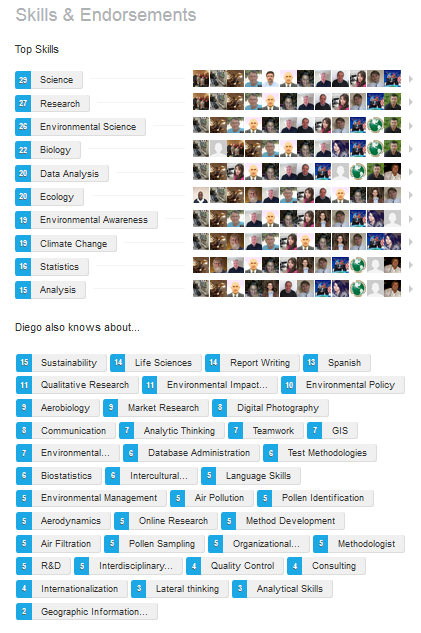 Publications with DOI at ResearchGate
Publications with DOI at ResearchGate
https://www.researchgate.net/profile/Diego_Fdez-Sevilla/publications
Publications at YouTube
_________________________________________
Publication’s Index
_______________________________
Conceptual Framework: A theoretical structure of assumptions, principles, and rules that holds together the ideas comprising a broad concept.
Every idea acquires a broader meaning when it gets contextualised in a Framework and Timeline. Therefore I have created this page containing all publications in chronological order, and in two columns, Conceptual framework and Research. The aim is to facilitate navigation in the evolution of concepts and assessments expressed through the whole blog. The objective pursued is to highlight the value of continuity and interconnectivity between publications, ideas and concepts, between lapses of time (earliest and those more recent) and between disciplines.





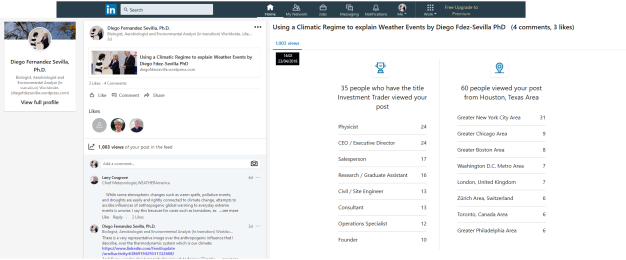

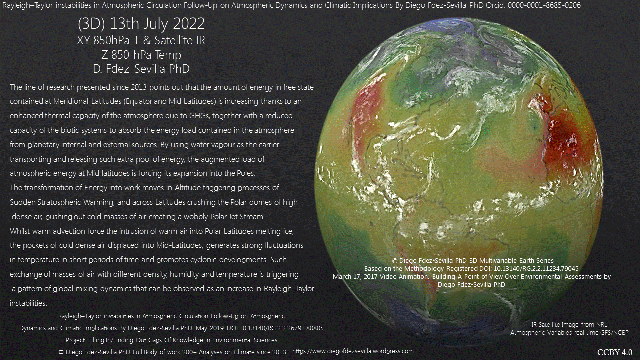
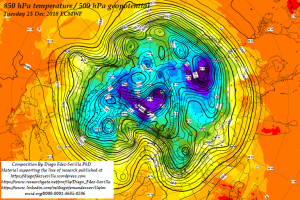
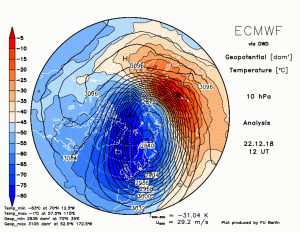






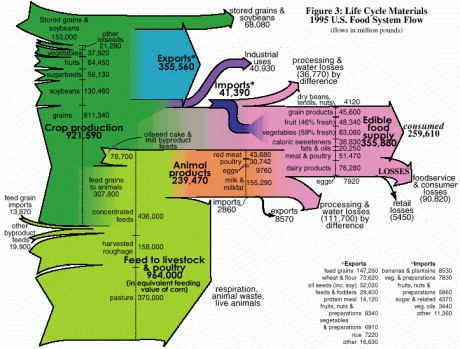
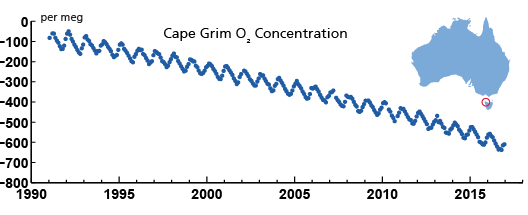







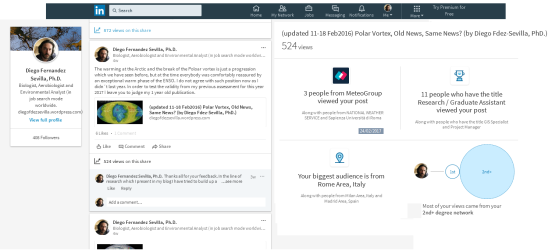
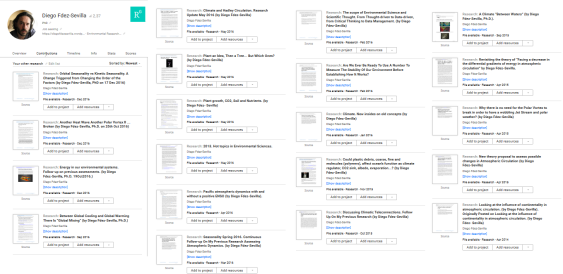

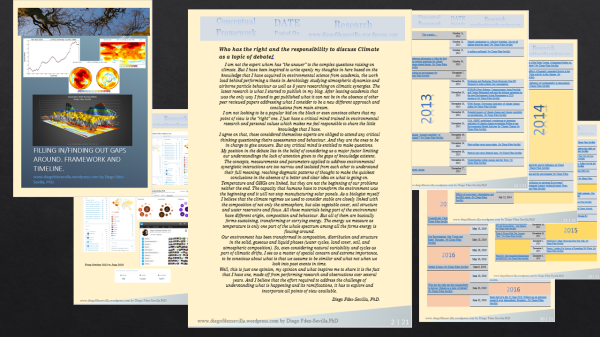


 Would you like for this line of research to keep going, please consider to nominate it for an award for funds at
BBVA Fundation. FRONTIERS OF KNOWLEDGE AWARDS
https://www.frontiersofknowledgeawards-fbbva.es/conditions/
Would you like for this line of research to keep going, please consider to nominate it for an award for funds at
BBVA Fundation. FRONTIERS OF KNOWLEDGE AWARDS
https://www.frontiersofknowledgeawards-fbbva.es/conditions/ orcid.org/0000-0001-8685-0206
orcid.org/0000-0001-8685-0206